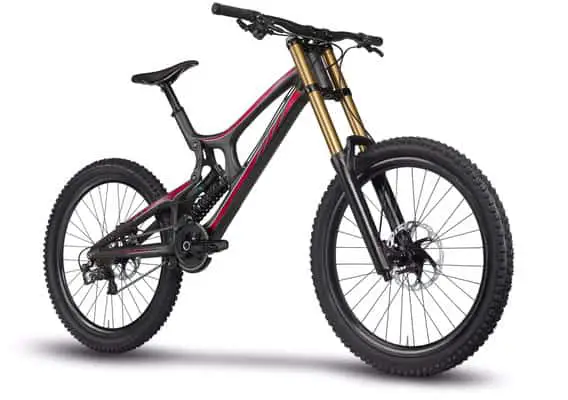Luckily, having a tire wobble on a true rim is not so commonly seen these days. Years ago, I remember it was a must-happen situation with pretty much any inner tube setup. Tubeless setups were a bit more fortunate to avoid these problems because of the air pressure being spread perfectly even on the tire’s sidewalls. However, I find that it still happens from time to time even today, especially with cheaper tires. Even though we’ve gone so far in wheel-tire compatibility, some factors won’t allow this problem to stay in the past.
I think this qualifies for one of the most frustrating things for anyone working at the bike shop. Everyone I know, at least. So I decided to answer some questions and help with some tips, for anyone that doesn’t have lots of experience with it.
What Are The Risks of Bike Tire Wobble?
I’m sure some of you have seen their wobbling wheels or tires and thought, I can go ride and fix it some other time. I’ve done it several times in the past until I learned better. I completely understand that wobbling may seem okay but it’s far more complicated than losing only the efficiency.
Less Traction
Let’s start with the most important thing in mountain biking and that’s traction. Especially us who ride mountain bikes for recreation, we value traction over speed. Or at least we should, even though that’s not always the case.
There are several ways in which tire wobble can affect traction. First and the most obvious is that sideways wobble can affect your balance while rolling over rocks or roots. Most of the tire slips happen over those two, and the result is a nasty fall to the ground. A tire that wobbles simply slips to the one side or the other more often than not. An easy way to ruin your fun on a trail.
The second way would be a vertical wobble which creates a hump on the tire. When you are riding on a road you will experience constant bumping. The thing is, that bumping usually gets unnoticed on a trail because you are riding over stuff that bumps you anyway. Your muscles will prepare for certain balance changes when you face rocks or roots. However, a wobbling tire will cause unexpected bumps in wrong situations and disrupt your balance. Most of the time it will just be annoying but it can actually make you fall to the ground.
Weaker Wheels
Let’s be real, wobbling wheels/tires won’t cause injuries so often but they will cause damage to your bike in a lot of ways.
Wobbling can put a lot of sideways force and sideways impacts on your wheels, increasing the chance of wheel spokes breaking. This is actually why they break in most of the situations.
Not only that but your rims can become permanently untrue. There is a point after which you can’t true your wheel anymore unless you want to force it back by putting pressure on the rim with your hands. Or even worse, hit it repeatedly with a hammer which rarely ever works. Had this happen a few times, mostly on under $300 wheels.
Usually happens when you ride on a wobbling tire for some time because each impact puts force on the spokes unevenly, slowly weakening the rim. Which then results in a destroyed wheel.
Damaging The Bearings
Have you ever noticed that right side bearings in the back wheel usually gets broken first? It happens because of the chain pull causing more stress on the right side where the cassette is. It literally tries to bend the hub that way.
Why am I mentioning this? Because the same thing happens when a wheel starts to wobble. Sideways tension caused by wobbling puts unnecessary stress on the bearings by literally trying to twist the hub. It’s not uncommon to see axles breaking or at least bearings wear out quickly due to wheel or tire wobbling.
The Wheel Lock
The wheel lock is something that happens when your tire hits the frame and gets stuck. For some of us that like to use as wide tires as our frames allow us, that’s not so strange thing to happen. On one of my bikes, the tire is so close to the frame that I end up truing the wheel after each ride. Just to be sure that it won’t mess up my intentions of having a good time on the next ride.
For all the reasons I mentioned above, tire wobble must be eliminated completely for a setup like this to even function.
Common Causes of a Bicycle Tire Wobble
Rim Tape
Rim tape is the most common reason why a tire won’t seat properly. If a rim tape is wider than it should be, then it can reach the rim wall. Since it is where a tire bead should sit, it will create friction and not allow the bead to pop up there.
Sometimes it happens because a rim tape simply slips out of the center and it’s an easy fix. After it no longer touches a rim wall, the tire should be seated with ease, if there are no other problems involved.
For glued tapes, if they are too wide you should cut them to the proper width.
Twisted Tube
When running a classic tube setup a number one mistake most people do is they insert a tube without pumping it up just a bit first. It’s necessary for a tube to acquire its shape before it’s inserted inside a tire. What I’ve usually seen around is people claiming a tire is defective because they didn’t insert the tube properly. Without inflating it first, it usually gets twisted or folded inside and results in the tire not seating properly in that spot.
Luckily, it is an easily fixable problem.
Tire Bead Damage
I’ve had this very problem with one tire lately. I’ve had an almost brand new Maxxis Ardent Race tire somewhere around. Since I don’t like my stuff being randomly left all over the place, I’ve used zip ties to tie it to a bike stand. Usually, there would be nothing wrong there but I left it really tightly tied exactly over the bead for a long time.
Of course, the bead got damaged. Or to be more precise, the rubber that covers the bead got damaged. Now that defect won’t allow the tire to be seated. For some reason, it gets stuck on the rim. It works fine a wider rim though but the rim I want to use it on is more of an old type mountain bike rim with deep rim walls which simply cause too much friction with the tire.
Defective Tire
In the bike shop, I’ve had several cases of defective tires. Sometimes happens that a tire has a bubble-like deformation. From what I know it’s a common thing to happen during a tire manufacturing process and they usually trash it right away. Even if they don’t, bike shops usually return them upon arrival. But still, sometimes they slip into customers hands.
So yeah, this is a situation that you may have. Check your tire in detail and inspect it for any deformation that may cause wobbling.
Tips on How to Properly Seat a MTB Tire
Air Pressure
The first thing I always try to do is to increase air pressure. Obviously, I’ve already put it on maximum air pressure stated on a tire but you can actually go safely over the limit.
Maximum air pressures are really safe limits in order to prevent damage during the actual riding. However, when there are no outside forces at work, tires can safely withstand more pressure than they would while riding.
I usually go 25-30% over the limit, no more. That was, in my experience, safe enough to never do any damage to the tire, as long as you put it back to the right pressure before riding. And I would say not leaving it on high pressure for too long, you never know.
Soap
Soap is an excellent lubricant to use for a tire to slip into place. You can start by using soapy water or any soap-based cleaner, rubbing it all the way around the tire bead will usually be enough to seat it properly.
However, it tends to dry quickly so it’s sometimes difficult to manage if a tire is giving you problems in several places. In that case, I like to use liquid soap without any water. It’s a bit more jelly-like which makes it a better lubricant and it dries much slower. It’s more effective in every way except that it leaves a mess behind. You should clean the rim afterward if you have rim brakes. Otherwise, your brakes might be a bit squeaky.
Silicone Sprays And Oils
When soap isn’t enough, you can try and use a bit of chain oil, any penetrating oil spray or a silicone spray like DuPont Silicone Lubricant. These work miracles in seating a tire but there is a drawback. you need to be really careful with the amount and surface they come to.
If you have rim brakes I would advise not to use these at all. But if you decide to use them anyway, you need to completely clean your rims with alcohol or otherwise, your brakes won’t work.
The second thing you need to be careful about is not to spray them on parts of a tire that touches the ground. Your tires will become slippery and you will lose all traction. It’s extremely dangerous!
Cleaning With Alcohol
The reason why a tire won’t seat properly can be some rubber residue. This usually happens with used tires because they are a bit worn out already.
A good way to make sure you have a clean surface on both rim and tire is to clean them with rubbing alcohol like Solimo 99% Isopropyl Alcohol. If the residue was the problem, this will certainly help. And if it doesn’t, now you have a clean surface to use soap on.
Using Force
You can try forcing it to seat on the rim. However, this is the last resort. Only when a tire is lubed enough with soap and it still won’t pop into place, then you can try to use a bit of force.
There are a lot of ways in which you can do this but my favorite is using a workshop clamp. You need to put a rag or something around the tire first to make sure you don’t damage it. I’ve had one slice open once on a sharp clamp edge. All that’s left is to try and bend it in the opposite direction from the spot that won’t sit on the rim. Don’t use too much force though, you can damage the rim.
Wouldn’t recommend doing it this way to everyone, as this method requires some experience and knowledge about tires and wheels composition to avoid causing damage.

